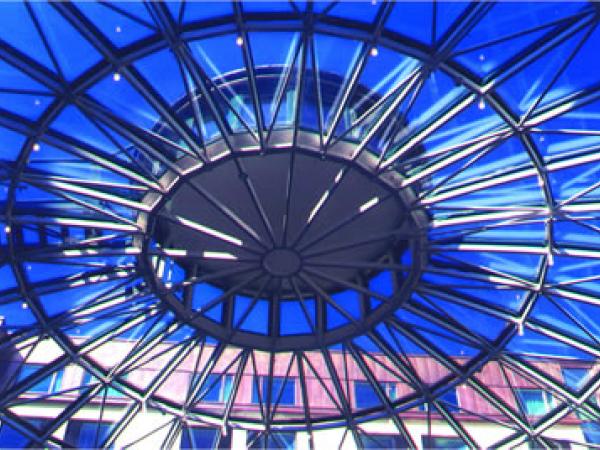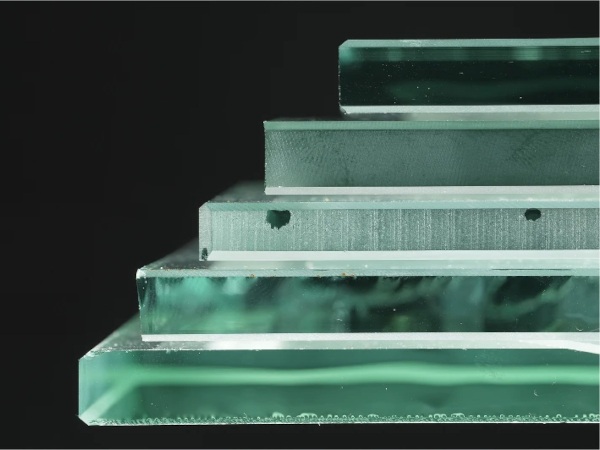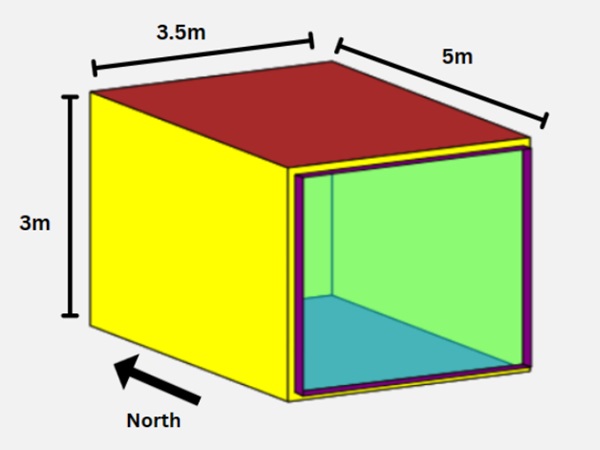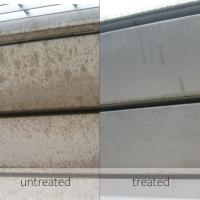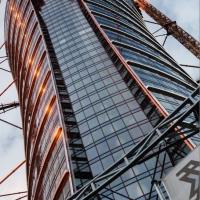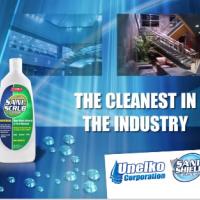Energy Efficiency Breakthroughs for Commercial Glazing
Glass attracts immediate attention to almost any building, and often defines a structure’s character. However, the energy loss associated with it is a major concern for designers and owners. Heat loss in winter and overheating in summer represent a major portion of the heating and air-conditioning (AC) load, contributing significantly to the cost of operating a building.
To mitigate this inefficiency, dual- and triple-glazed vision areas have been developed, aptly named ‘insulating glass’ (IG), which comprise approximately 86 percent of all vision areas in new commercial buildings. A recent development in IG—the non-metallic thermoplastic unit spacer (TPS)—offers a significantly higher overall insulation value and longer life for commercial fenestration. The architect can now apply glass of almost any size and shape without being limited by energy concerns.
There is also an aesthetic advantage, as the spacer is practically invisible. The owner will realize significant efficiencies through reduced heating and cooling expenses, and will not have to budget for glazing replacement until well beyond the warranty’s expiration.
Finally, occupants will enjoy enhanced comfort, as the uniform warm surface temperature dramatically reduces occurrences of cold drafts and condensation on the inside of the window. Commercial insulating glass has come a long way, indeed, in product improvements.
History and evolution of IG concepts
Insulating glass consists of two, sometimes three sheets of glass, or ‘lites,’ held apart 6.4-mm to 19-mm (0.25 in. to 0.75-in.) by a spacer (a frame along the perimeter of the lites). The unit is permanently sealed around the edge to prevent contaminants from entering the space between the lites and gas from escaping gas-filled units (Figure 1).

Early examples of insulated windows stretch back to the 1930s, where they were used primarily in residential applications (people would mount a second removable window over the permanent one). Proper insulating glass—that is, a unit with two or three lites—was eventually introduced by some glass manufacturers, or ‘primaries.’ These early prototypes included concepts such as forming a dual-pane glass unit from a glass bubble filled with dry air, or two glass panes with a copper-coated edge zone soldered to a lead or a steel spacer.
While these attempts improved the window’s insulating properties, those early units, or ‘thermopanes,’ were often short-lived, as they generally did not tolerate thermal stress and pumping wind loads. In short, they would either break or separate from the spacer.

The 1960s saw the introduction of aluminum spacers, the concept of which is quite similar to the way things are done today. The aluminum box-spacer is filled with desiccant beads to absorb any residual humidity in the air space as well as any moisture possibly penetrating the edge seal. The IG unit could be assembled as a single-seal unit with hotmelt butyl applied around the perimeter, or as a higher quality dual-seal unit with butyl as the primary and either polysulfide, polyurethane, or silicone as the secondary seal.
Durability was gradually improved with the introduction of better sealant materials as well as dual-seal units. The performance of these spacers generally satisfied designers’ requirements and the technology stagnated for several years. However, with the introduction of sophisticated low-E (emissivity) glass, as well as gas filling, the metal spacer was found to act as a heat bridge—or rather, a ‘cold bridge.’ This became the focus for further thermal improvement.
.gif)
Coated glass and gas improve the insulating properties, or ‘U-value,’ of an IG unit. Traditionally U-values are measured at the center of the IG unit, and top performing, high-quality units offer U-values approaching that of exterior walls. However, these impressive numbers are frequently qualified with ‘center of glass,’ but the center of the glass does not tell the whole story.
Conventional IG units with a built-in thermal bridge at the edge account for significant heat loss in winter around the perimeter. The glass surface temperature falls off dramatically in the zone of about 64 mm (2.5 in.) around the edge during cold weather, creating condensation and cold air drafts.
The logical next step was to get away from the conventional, heat energy-conducting aluminum box spacer. Different spacer alternatives have been brought to market over the years, but they were designed primarily for residential applications. Since all of these newer spacer concepts attempted to alleviate the cold zone around the perimeter of the IG unit, the industry term ‘warm-edge’ was created.
Glass
The primaries, as well as larger manufacturers, have made good progress in developing glass that addresses both energy and comfort concerns. Improvements in thermal and optical performances have been achieved with surface coatings designed to shield against heat (i.e., infrared [IR] and ultraviolet [UV] radiation) while transmitting as much visible light as required. The industry distinguishes two basic types of this low-E glass:
1. Pyrolytic coatings, or ‘hard coats,’ are applied on the float line while the glass ribbon is being formed, and become an integral part of the finished glass. Pyrolytic-coated glass does not require special handling.
2. Sputter, or ‘soft’ coats, are microscopic metal surface coatings applied to the finished glass by vapor deposition. Sputter-coated glass has a delicate surface that is easily damaged by mishandling, but boasts better optical properties than pyrolytic glass.
The performance of coated glass is expressed using a number of different criteria, including:
- visible light and UV transmittance
- solar heat gain coefficient (SHGC)
- shading coefficient (SC)
The visible light transmittance of clear, coated glass is generally between 40 and 75 percent, depending on the application. SHGC, which measures the amount of heat allowed to pass through the glass, is higher than 60 percent in most cases for pyrolytic coated glass, but lower than 50 percent for sputter-coated glass—often between 20 and 40 percent.
Coatings have also been developed for specific regions (i.e. greater emphasis on heat protection in southern climates and the reverse for northern climates), while other coatings can accommodate some of the most extreme environmental conditions.
Given the fragile nature of the sputter-coated surface, the coating is applied on the inside surface. Microscopically thin, this coating represents a possible path for the permeation of humidity, so it must be removed from the edge zone to allow proper adhesion and sealing of the edge seal system.
A very recent development by the primaries is self-cleaning glass. Here, the exterior surface has either a hydrophilic or hydrophobic coating. The sun’s UV radiation causes the coating to react chemically with the dirt and break down its adhesion to the glass. The dirt falls off or is washed away naturally by rain. While this glass is promoted as ‘self-cleaning,’ it may be more appropriate—as one manufacturer states—to call it ‘low-maintenance,’ as some cleaning may still be required from time to time.
Another important glass issue is safety. Local codes in areas with high winds (and high vandalism rates), prescribe laminated or tempered glass, or a combination of both for the construction of IG units.

Edge seal
Ever since the primaries attempted to improve energy efficiency by installing two panes of glass instead of just one, the space between them became an issue. The edge seal performs a host of functions and defines IG unit types. The major component of the edge seal is the spacer, which defines and maintains the space between the lites. Besides, keeping out contamination or keeping gas in the spacer must also include a drying agent, or desiccant, to absorb any humidity present in the space at the time of manufacturing and beyond.
After all, there really is only one way an IG unit can ‘fail’ (besides smashing it in), and that is when the inside fogs up. Condensation forms on the inside surface of the glass if there is a leak in the edge seal. The better the edge seal, the longer the expected life of the IG unit.
The conventional edge seal as shown in Figure 1 consists of an aluminum spacer with a cross-section of a box filled with desiccant beads. For high-quality dual-seal units, the spacer is coated with polyisobutylene (generally referred to as ‘butyl’ or ‘PIB’ on the shop floor) on both glass-contact sides, forming the primary seal.
The cavity between the glass edges on the outside of the spacer is filled with polysulfide, polyurethane, or silicone, thereby forming the secondary seal. Lower cost single-seal units receive only a hotmelt butyl seal on the outside of the spacer. A secondary seal of silicone must be used in IG units for structural glazing, which is often found in commercial applications.
Gas filling
To further improve thermal properties, IG units are sometimes filled with inert gas. Regular air in the space between the lites tends to circulate, down to the cold surface and up to the warm, creating heat loss by convection. Certain gases reduce this convection and conduct less heat than plain air. Argon is suitable for units with a space of 9.5 mm (0.38 in.) and more. Argon is used most often; it is inexpensive and occurs freely in nature. Krypton, though significantly more expensive and used less often, achieves good results in thinner units.
Given its molecular properties, silicone is unable to retain gas, which is why gas filling of glazing for structural applications has generally not been attempted. Though the butyl material of the primary seal should be able to contain argon or krypton, the application of the primary seal in real life is often not as reliable as would be required to assure adequate gas retention.
According to Insulating Glass Manufacturers Alliance (IGMA) guidelines, the gas fill level of an IG unit, if it is declared ‘gas-filled,’ must be at least 90 percent. (European standards [DIN 1286, Part 2] specify a maximum permitted gas loss of one percent or less per year. There are no comparable North American standards.)

Current IG systems
Most IG units installed over the past 20 to 30 years are of the conventional desiccant-filled aluminum box cross-section design. A large number of manufacturers offer aluminum spacers in a variety of sizes. For commercial applications, the aluminum spacer receives a bead of butyl on each glass-contact side, which forms the primary seal when the IG unit is assembled and pressed. The secondary seal of structural silicone is applied after pressing (Figure 2).

One of the first warm-edge spacers was Swiggle®, a soft, butyl-based material with an integrated corrugated thin metal strip that maintained the distance between the lites. Despite having a metal strip, its configuration conducted less heat than a conventional spacer (Figure 3).
Another successful spacer is SuperSpacer®, a silicone foam spacer with adhesives on both glass contact sides and a plastic multi-layer vapor barrier shield on the back. SuperSpacer requires a secondary seal, usually hotmelt butyl or one of the new warm-applied DSE (dual-seal equivalent) materials (Figure 4).
Though totally different in concept, Swiggle and SuperSpacer share common characteristics. Both have desiccant integrated in their respective materials, come in coils or rolls in sealed containers, and are suitable for manual application with relatively simple hand tools.
Also found in the warm-edge spacers group is a variant of the conventional spacer, which is similar to aluminum box-spacers but formed of stainless steel with extremely thin walls. The stainless steel walls conduct less heat than the thicker aluminum walls. Another variant offered by one spacer manufacturer uses two narrow, desiccant-filled metallic spacers that are separated and held together by polyurethane, creating a metallic spacer with a thermal break.

The most successful of the warm-edge spacers is Intercept®, a steel spacer with a U- profile rather than a box cross-section. The U, open to the inside of the IG unit, eliminates one of the heat bridges, and the remaining bridge—the bottom of the U—is usually buried in the window frame and not directly exposed to outside temperatures (Figure 5).
Unfortunately, the warm-edge IG systems are, by-and-large, limited to residential applications. For commercial applications, at least until recently, only conventional IG units could be used, given their larger size, heavier glass, and the requirement for a structural silicone seal.
Breakthrough development
TPS, the thermoplastic spacer system, is the latest warm-edge entrant. Though it has been in production in Europe since 1996, TPS only appeared on the U.S. scene in 1999. TPS offers a number of interesting attributes that satisfy many unresolved issues.
The TPS material is supplied in 208-L (55-gal) drums and formed into a spacer directly on the glass by a computer-controlled extrusion machine. The secondary seal may be polysulfide, polyurethane, or silicone. The fully automatic production method is the simplest available; there is no need for a separate spacer preparation activity because it is applied in the IG manufacturing system. The fully automatic process ensures consistent quality and the utmost flexibility.

Shaped and rectangular units as small as 191 x 349-mm (7.5 x 13.75-in.) and as large as 2692 x 4064-mm (106 x 160-in.) and even larger, with space widths between 1.6 mm to 19 mm (0.06 in. to 0.75 in.), with or without gas fill, can be produced in any sequence without interruption. Everything is now reduced to entering data in a computer. The picture illustrates the simplicity of the manufacturing process compared to the conventional method.
In addition to regular dual-pane IG units, TPS allows the processing of triple units with perfectly congruent spacers, as well as units with off-set, or ‘stepped,’ edges on one, two, three, or all four sides.

The end product is an IG unit with unmatched thermal characteristics. There is no heat conducting metal or material present, and laboratory tests certify a life expectancy of well over 80 years (see image below). The first TPS IG manufacturer in the U.S. has not reported a single unit failure since its introduction, over three years ago.
The butyl-based TPS material retains gas, which makes it possible to offer gas-filled IG units with a structural secondary silicone seal for commercial applications, while ensuring excellent gas retention (losses of less than the industry criterion of 1 percent per year).

According to calculations and the product listing of Enermodal, TPS features the highest insulating value of any listed product. Accredited test and research facilities in Europe, such as Rosenheim in Germany, attest to an eight percent or greater improvement in the overall window U-value when installing a TPS IG unit compared with a high-quality European unit (measured according to DIN 52619-3).
Today TPS IG units are being produced in Europe, United States, and Asia, with approved TPS material being offered by several chemical companies. TPS glazing has been applied to many different projects of banks, department stores, office buildings, corporate headquarters, hospitals, universities, and government buildings (some of the most unique applications include monasteries and old hotels).

Outlook
Several parallel efforts are under way to tighten the performance criteria for insulating glass, along with methods to mandate and enforce those standards. This momentum, plus rising energy costs, will force designers to project windows with better thermal and durability attributes. TPS is, and will be, the one glazing concept that easily meets today’s requirements and those of the future.
Article courtesy of:
Marcel A. Bally
P.O.Box 221
Bridgehampton, NY 11932
USA
1-631-395-5144
mabally@att.net


